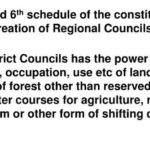Air Pollution Crisis: Assessing India’s AQI and its Pollutants

The latest Lancet study on Air Pollution reveals that it causes about 11.5 percent of deaths in Capital city of Delhi every year, roughly around 12,000 deaths. The study is a first-of-its-kind multi-city study in India.
The study finds across 10 cities of India — Ahmedabad, Bengaluru, Chennai, Delhi, Hyderabad, Kolkata, Mumbai, Pune, Shimla and Varanasi — more than 33,000 deaths could be attributed to air pollution every year on average.
The World Health Organisation(WHO) has defined the safe limit of PM2.5 (15 micrograms per cubic metre) on 99.8 percent of the days. The study found PM2.5 concentrations in these 10 cities, exceeded the safe limits defined by the WHO.
The study revealed that mortality rose by 1.42 percent for every 10 micrograms/cu meter increase in PM2.5 levels across all ten cities.
LEARNING FROM HOME/ WITHOUT CLASSES/ BASICS
Particular Matter
PM 2.5 means particulate matter in the air. It is caused by motor exhaust or anything combustible – that is less than 2.5 micrometers.
People sometimes call airborne particles ‘particulate matter’ or ‘PM. They include dust, dirt, soot, smoke, and liquid droplets. Various sources, both natural and human-related, directly emit some particles into the air
Natural sources include bushfires, dust storms, pollens, and sea spray.
Those related to human activity include motor vehicle emissions, industrial processes (eg electricity generation, incinerators, and stone crushing), unpaved roads, and wood heaters.
Particles can be classified based on their size, referred to as their ‘aerodynamic diameter’. ‘Coarse particles’ are those between 10 and 2.5 micrometres (µm) in diameter; ‘fine particles’ are smaller than 2.5 µm; and ‘ultrafine particles’ are smaller than 0.1 µm. Studies have linked exposure to particle pollution to several health problems including
respiratory illnesses (such as asthma and bronchitis) and cardiovascular disease.
INDIA’S STANDARD FOR LEVEL OF POLLUTION
India has set standards for what it thinks are appropriate warnings for a particular level of pollutant. Air Quality Index (AQI) helps in comparing pollution levels at a glance with a color code and a numerical value. In India, AQIs use the concentrations of pollutants like PM2.5 (fine, respirable particles), sulfur dioxide (SO2), nitrogen dioxide (NO2), and carbon monoxide (CO) to determine air quality.
There are six AQI categories, namely: Good, Satisfactory, Moderately polluted, Poor, Very poor and Severe.
The Index centers around five chief pollutants.
They are Particulate Matter with a diameter of less than 10 micro meters (PM10).
Particulate Matter with a diameter of less than 2.5 micrometers (PM2.5), ozone (O3), Nitrogen Dioxide (NO2), and Carbon Monoxide (CO).







0 Comments